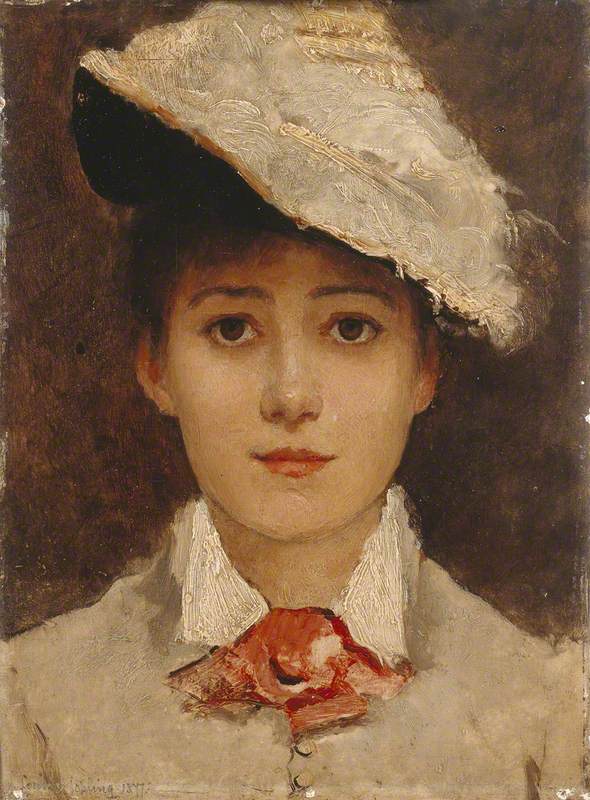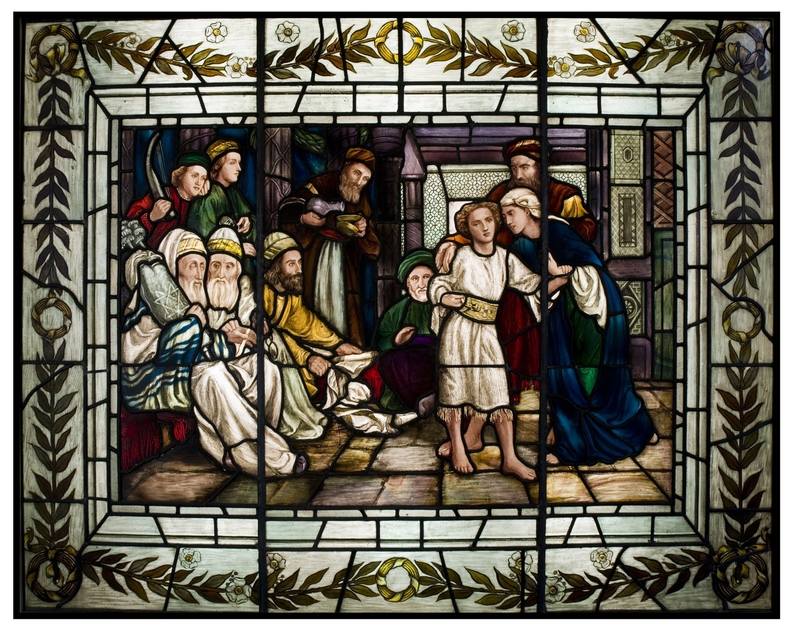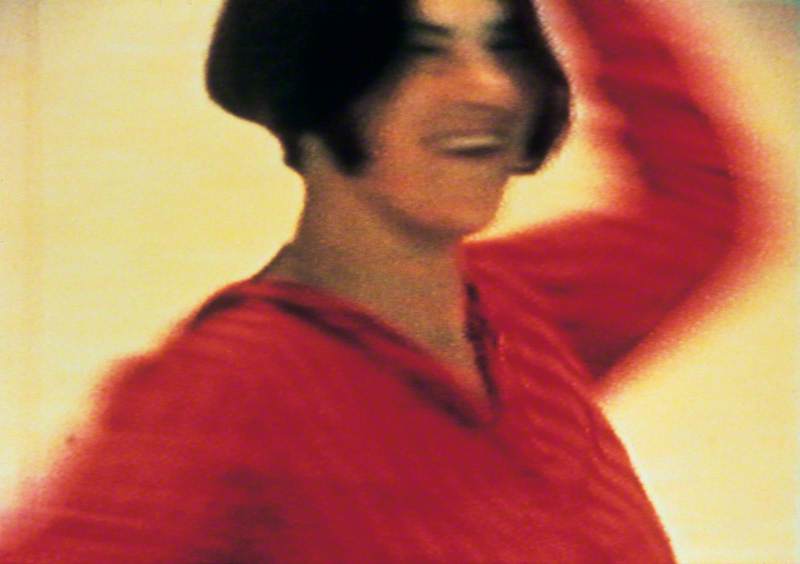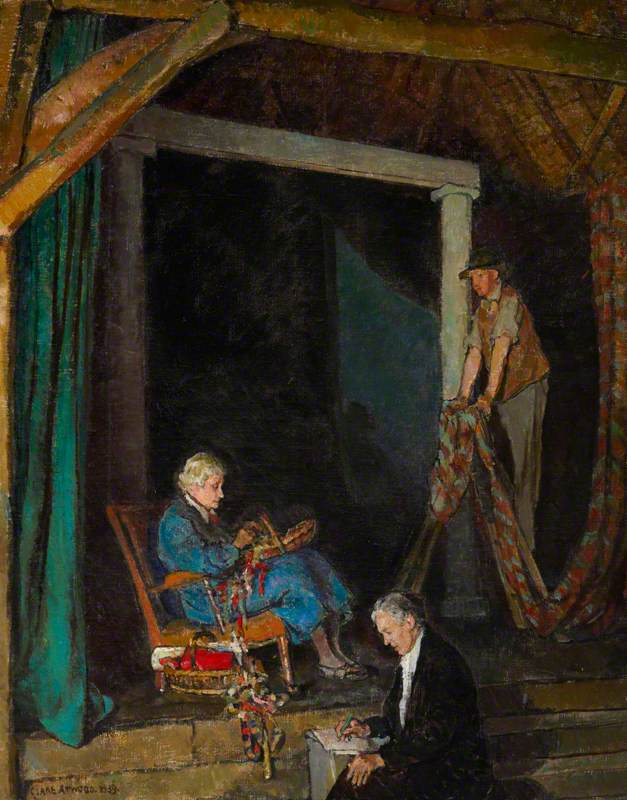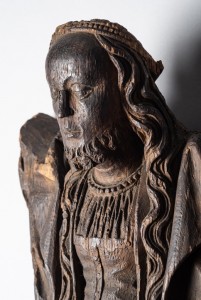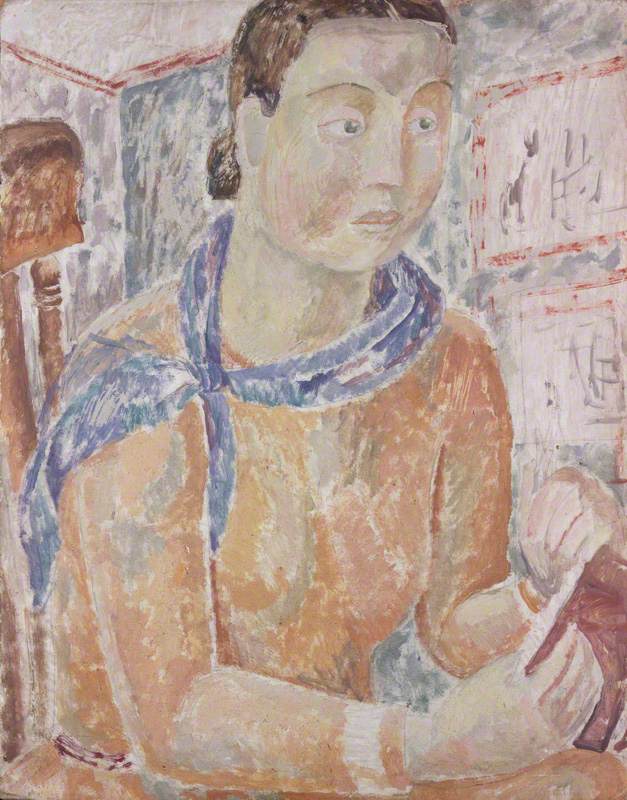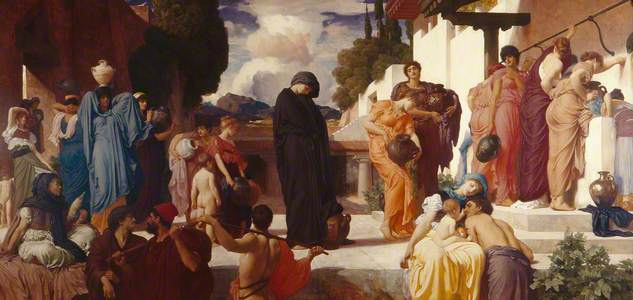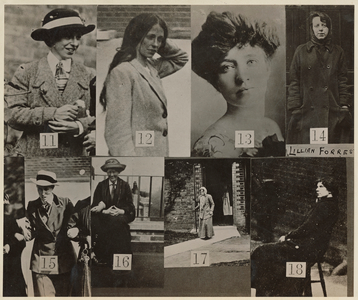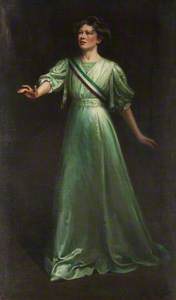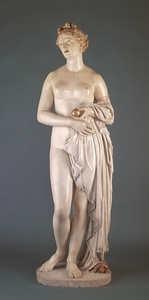The crack and smash of breaking glass was the first indication that anything unusual was happening during a quiet lunchtime at The National Gallery in early 1914. The attendant on duty initially thought that a skylight undergoing repairs had shattered under pressure. As he threw aside his newspaper and peered up at the ceiling, the real damage was done. While the attendant was distracted, Mary Richardson, suffragette and member of the WSPU (Women's Social and Political Union) hacked six times at the prized oil painting by Velázquez, The Toilet of Venus.
The Toilet of Venus ('The Rokeby Venus')
1647-51
Diego Velázquez (1599–1660) 
According to an emotional article printed the next day in The Times, Venus suffered 'a cruel wound in the neck' and 'a broad laceration starting near the left shoulder', amongst other injuries.
Vandalised 'Rokeby Venus', 1914
(cuts made by Mary Richardson in 1914 using the meat cleaver shown in the top-right corner) .jpg)
As Richardson was bundled out of the Gallery, she proclaimed, 'Yes, I am a suffragette. You can get another picture, but you cannot get a life, as they are killing Mrs Pankhurst.'
Emmeline Pankhurst Addressing a Crowd in Trafalgar Square
1908
Central Press (active since c.1908) 
Emmeline Pankhurst's Arrest at Buckingham Palace
1914
unknown artist 
This was the highest profile, but not the first, attack on paintings displayed in public by members of the women's suffrage movement. A year earlier three women armed with hammers smashed the glass protecting thirteen paintings by Pre-Raphaelite and Victorian masters in the Manchester Museum of Art. Like Richardson, this attack was nominally committed in protest against the incarceration of the founder of the WSPU, Emmeline Pankhurst.
Mrs Richard Marsden Pankhurst (1858–1928), née Emmeline Goulden
1927
Georgina Agnes Brackenbury (1865–1949) 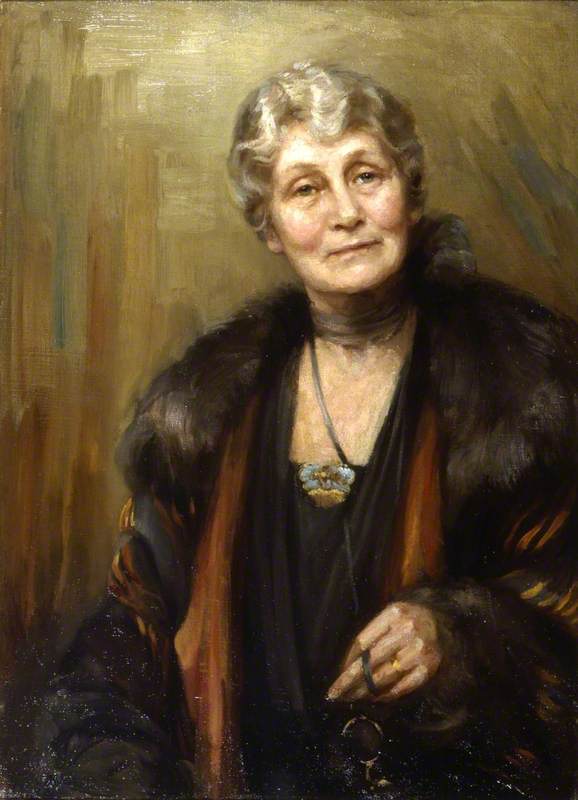
Lillian Forrester, one of the perpetrators (and number 14 in the photographs of militant suffragettes further down this article), stated that 'we broke the glass on some of the pictures as a protest but we did not intend to damage the pictures.' Nevertheless, damage was done and expensive repairs were necessary to restore the works. Since then galleries were on high alert; The National Gallery swelled the ranks of its usual staff with police constables and plain-clothes officers, none of whom managed to prevent Richardson's attack.
Though Richardson admitted that she didn't like the Velázquez, she was no philistine. Nor were the trio of women who attacked the paintings in Manchester Art Gallery. Rather, both attacks were motivated by aesthetic as well as political reasoning. In a signed statement addressed to the WSPU after the action, Richardson declared: 'I have tried to destroy the picture of the most beautiful woman in mythological history as a protest against the Government for destroying Mrs Pankhurst, who is the most beautiful character in modern history. Justice is an element of beauty as much as colour and outline on canvas.'
Richardson's appreciation of 'colour and outline' and her respect for 'mythological history' were tempered by the higher valuation she placed on human life. Excoriating her detractors, Richardson threatened that 'until the public cease to countenance human destruction the stones cast against me for this picture are each an evidence against them of artistic as well as moral and political humbug'. It was no accident, then, that Richardson's target was a nude that had long been held up as the epitome of feminine beauty.
Indeed, it cannot have escaped the public, or Richardson's, notice, that the paintings destroyed in Manchester a year earlier had included several representations of idealised female figures painted by male artists. The position of the female characters depicted in these paintings spoke either aesthetically or narratively to the objectification of women in a society that considered women as objects to possess or exchange.
Arthur Hacker's Syrinx depicts a mythological female nude posing by a riverbank.
Dante Gabriel Rossetti's Astarte Syriaca portrays the Syrian goddess of love struggling to hold her dress in place.
Frederic Leighton's Captive Andromache features a captured and enslaved Trojan princess.
Both attacks were not just political protests in the name of women's suffrage: they were also part of a more subtle cultural campaign. By slashing to pieces icons of female beauty, transfixed on canvas for the delectation of the middle and upper classes whose tastes were defined by their male members, Mary Richardson and her fellow suffragettes were waging a war against the cultural objectification of women.
Shock at the suffragettes' actions was widespread. The image of the mutilated Venus was prime fodder for a media hungry for stories of the latest suffragette scandal. What is curious is that few commentators at the time noted the overtly conservative nature of the attack. Richardson and her comrades had chosen to deface paintings that encapsulated the male objectification of women, but in doing so they could not avoid implying that sexualised images of women ran against the principles of an emancipated society. In Richardson's account of the attack, she describes how, before attacking the Venus, she sketched a portrait of a nearby Madonna whose smile brought her 'a certain calmness of mind'. The symbolism of Richardson paying homage to the Madonna and desecrating the nude is almost too typical to be genuine.
The conservatism of the attacks could be dismissed with a sympathetic nod to the day and age: Victorian attitudes to sexuality had not changed much in Edwardian Britain. Possibly it is unfair to expect that women fighting so hard for one cause should concurrently be fighting for another. Indeed, this opinion was firmly held by senior members of the WSPU. Christabel Pankhurst, who collaborated with her mother to run the WSPU, vigorously defended the suffrage movement from any entanglement with working-class issues. Christabel argued that '[a] working women's movement was of no value. Their lives were too hard, their education too meagre to equip them for the contest.' It was Christabel Pankhurst who gave an official WSPU sanction to Richardson's plan to deface the Venus in the heart of that bastion of middle- and upper-class taste: The National Gallery. It is also interesting that several years later Richardson (number 11 in the photographs of militant suffragettes below) went on to run the Women's Section of the British Union of Fascists under Oswald Mosely.
Surveillance Photograph of Militant Suffragettes
1914
Criminal Record Office (active since c.1914) 
Surveillance Photograph of Militant Suffragettes
1914
Criminal Record Office (active since c.1914) 
Richardson and her fellows had demonstrated that art was a legitimate target for the suffragettes. It fell to a more diverse constellation of individual artists, collectives and groups to demonstrate that art was also a crucial tool for the campaign. From cartoons to oil paintings, portraits to propaganda, female artists demonstrated that the campaign for women's suffrage was a fight fought as much with the paintbrush as with ink, stones, and explosives.
Indeed, an epicentre of artistic activism was Ethel Wright's 1909 portrait of Christabel Pankhurst, which was rejected for inclusion in the Royal Academy's exhibition of the same year. The controversial portrait portrays Christabel mid-stride, gesturing and on the edge of speech. The WSPU sash is bound around her torso and she appears to be marching forward from darkness into light, clear symbolism for the rightness of her vision. The dynamic pose of the female sitter was controversial, and the painting's history equally so.
After being rejected by the RA, the painting formed the centrepiece of an arts fair put on by the WSPU to raise funds for their campaigning. The portrait was bought by Una Dugdale, a women's suffrage campaigner who famously refused to recite traditional vows at her wedding. At her death in 1966, Dugdale attempted to bequeath Wright's painting to the National Portrait Gallery, who rejected it. In 2011, Dugdale's family again offered the painting to the NPG, who accepted the work and unveiled it to the public in 2014.
At the other end of the artistic scale were the cartoons, embroidered banners and prints produced by artists in the Suffrage Atelier. The Suffrage Atelier was a collective of artists dedicated to furthering the cause of women's suffrage, but it also proved to be a crucial advocate of working-class female artists. The Atelier was based in the home of Clemence Housman and her brother, Laurence. Here, artists were able to attend evening classes in cartoons and illustration, life drawing classes in which suffragettes were often the models, and lectures. The Atelier arranged exhibitions of its artists' work, hosted by sympathetic and high-profile artists, such as Louise Jopling. Unlike other campaign groups, the Atelier paid artists for their work, which was a crucial factor in enabling the inclusion of working-class artists.
The outbreak of the First World War brought about dramatic changes in the women's suffrage movement. While Emmeline and Christabel Pankhurst set their minds to campaigning for conscription, Christabel's younger sister, Sylvia, campaigned for peace. Meanwhile, artists were presented with new opportunities to sway popular opinion, in the form of official commissions to create an artistic record of the home front.
Flora Lion, a preferred portraitist of the suffragettes, took this opportunity to paint heroic representations of women in factories. Clare Atwood also seized the chance to paint the female contributors to the war effort. These paintings were presented to the Imperial War Museum after the war, where they continue to be part of the official, canonical series of art works documenting the home front.
Devonshire House, 1918: Voluntary Aid Detachment Workers Filing Papers in the Ballroom
1919
Clare Atwood (1866–1962) 
Women gained the vote in 1918. At least, women who owned property, or were married to a property owner, got the vote in 1918. In practice this meant that single women from any class, or married women from typically poorer backgrounds, whose families rented rather than owned their property, were excluded. The fight for universal suffrage continued.
Victoria Ibbett, Art UK volunteer




